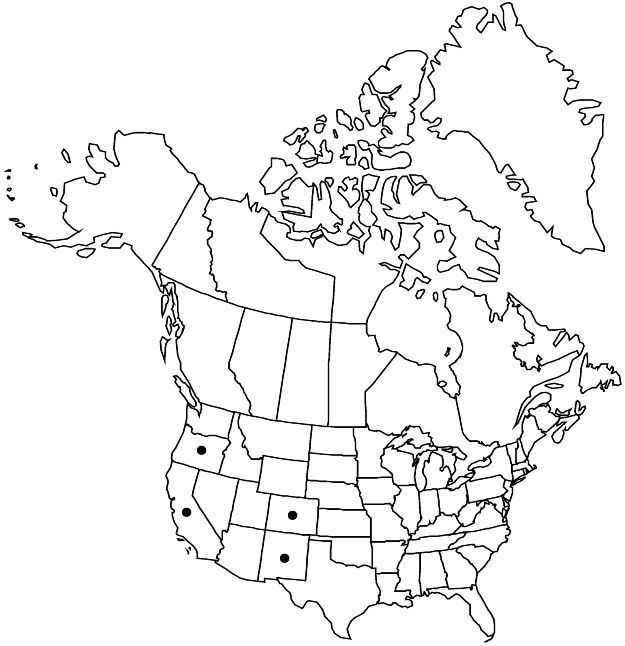Difference between revisions of "Euphorbia crenulata"
in W. H. Emory, Rep. U.S. Mex. Bound. 2(1): 192. 1859.
FNA>Volume Importer |
imported>Volume Importer |
||
| (6 intermediate revisions by 2 users not shown) | |||
| Line 1: | Line 1: | ||
{{Treatment/ID | {{Treatment/ID | ||
|accepted_name=Euphorbia crenulata | |accepted_name=Euphorbia crenulata | ||
| − | |accepted_authority=Engelmann | + | |accepted_authority=Engelmann |
|publications={{Treatment/Publication | |publications={{Treatment/Publication | ||
| − | |title=Rep. U.S. Mex. Bound. | + | |title=in W. H. Emory, Rep. U.S. Mex. Bound. |
|place=2(1): 192. 1859 | |place=2(1): 192. 1859 | ||
|year=1859 | |year=1859 | ||
| Line 16: | Line 16: | ||
|name=Tithymalus crenulatus | |name=Tithymalus crenulatus | ||
|authority=(Engelmann) A. Heller | |authority=(Engelmann) A. Heller | ||
| + | |rank=species | ||
}} | }} | ||
|hierarchy=Euphorbiaceae;Euphorbia;Euphorbia subg. Esula;Euphorbia crenulata | |hierarchy=Euphorbiaceae;Euphorbia;Euphorbia subg. Esula;Euphorbia crenulata | ||
| Line 31: | Line 32: | ||
|elevation=30–1800 m. | |elevation=30–1800 m. | ||
|distribution=Calif.;Colo.;N.Mex.;Oreg. | |distribution=Calif.;Colo.;N.Mex.;Oreg. | ||
| − | |discussion=<p>Euphorbia crenulata is most common in the central valleys of California and southern Oregon; it occurs disjunctly in southwestern Colorado and northwestern New Mexico. Previous reports from Arizona are based on misidentified specimens. Euphorbia crenulata is closely related to E. commutata.</p> | + | |discussion=<p><i>Euphorbia crenulata</i> is most common in the central valleys of California and southern Oregon; it occurs disjunctly in southwestern Colorado and northwestern New Mexico. Previous reports from Arizona are based on misidentified specimens. <i>Euphorbia crenulata</i> is closely related to <i>E. commutata</i>.</p> |
|tables= | |tables= | ||
|references= | |references= | ||
| Line 40: | Line 41: | ||
-->{{#Taxon: | -->{{#Taxon: | ||
name=Euphorbia crenulata | name=Euphorbia crenulata | ||
| − | + | |authority=Engelmann | |
| − | |authority=Engelmann | ||
|rank=species | |rank=species | ||
|parent rank=subgenus | |parent rank=subgenus | ||
| Line 52: | Line 52: | ||
|distribution=Calif.;Colo.;N.Mex.;Oreg. | |distribution=Calif.;Colo.;N.Mex.;Oreg. | ||
|reference=None | |reference=None | ||
| − | |publication title=Rep. U.S. Mex. Bound. | + | |publication title=in W. H. Emory, Rep. U.S. Mex. Bound. |
|publication year=1859 | |publication year=1859 | ||
|special status=Endemic | |special status=Endemic | ||
| − | |source xml=https:// | + | |source xml=https://bitbucket.org/aafc-mbb/fna-data-curation/src/2e0870ddd59836b60bcf96646a41e87ea5a5943a/coarse_grained_fna_xml/V12/V12_80.xml |
|genus=Euphorbia | |genus=Euphorbia | ||
|subgenus=Euphorbia subg. Esula | |subgenus=Euphorbia subg. Esula | ||
Latest revision as of 20:17, 5 November 2020
Herbs, usually biennial, occasionally annual, with taproot. Stems erect, sometimes decumbent at base, unbranched or branched, 12–40 cm, glabrous. Leaves: petiole 0–2 mm; blade obovate-spatulate to oblanceolate, 8–22 × 3–10 mm, base broadly attenuate, margins entire or slightly crisped, apex obtuse to ± rounded, minutely apiculate, surfaces glabrous; venation pinnate, midvein prominent. Cyathial arrangement: terminal pleiochasial branches 3, each 2-branched; pleiochasial bracts obovate to orbiculate-reniform, wider than distal leaves; dichasial bracts usually connate 1/3–1/2 length (often only on one side), rarely only connate basally, triangular ovate to reniform, base truncate to perfoliate, margins erose-denticulate to subentire, apex rounded to obtuse, rarely apiculate; axillary cymose branches 0–5. Cyathia: peduncle 0–0.5 mm. Involucre campanulate, 1.8–2.1 × 1.6–1.8 mm, glabrous; glands 4, crescent-shaped, 0.6–1.2 × 1.5–2.3 mm; horns slightly divergent to slightly convergent, 0.4–0.6 mm. Staminate flowers 11–18. Pistillate flowers: ovary glabrous; styles 0.9–1.4 mm, 2-fid. Capsules subovoid, 2.5–3 × 3.5–4 mm, 3-lobed; cocci rounded, smooth or puncticulate, glabrous; columella 1.9–2.3 mm. Seeds cream and brown mottled, oblong-ovoid to nearly globose, 2–2.5 × 1.4–1.7 mm, usually irregularly vermiculate-ridged and large-pitted, occasionally tuberculate or nearly smooth; caruncle reniform, conic, 0.5–0.6 × 0.5–0.7 mm.
Phenology: Flowering and fruiting spring–summer.
Habitat: Conifer, oak, and mixed forests, coastal scrub, grasslands, barrens and outcrops, roadsides.
Elevation: 30–1800 m.
Distribution

Calif., Colo., N.Mex., Oreg.
Discussion
Euphorbia crenulata is most common in the central valleys of California and southern Oregon; it occurs disjunctly in southwestern Colorado and northwestern New Mexico. Previous reports from Arizona are based on misidentified specimens. Euphorbia crenulata is closely related to E. commutata.
Selected References
None.